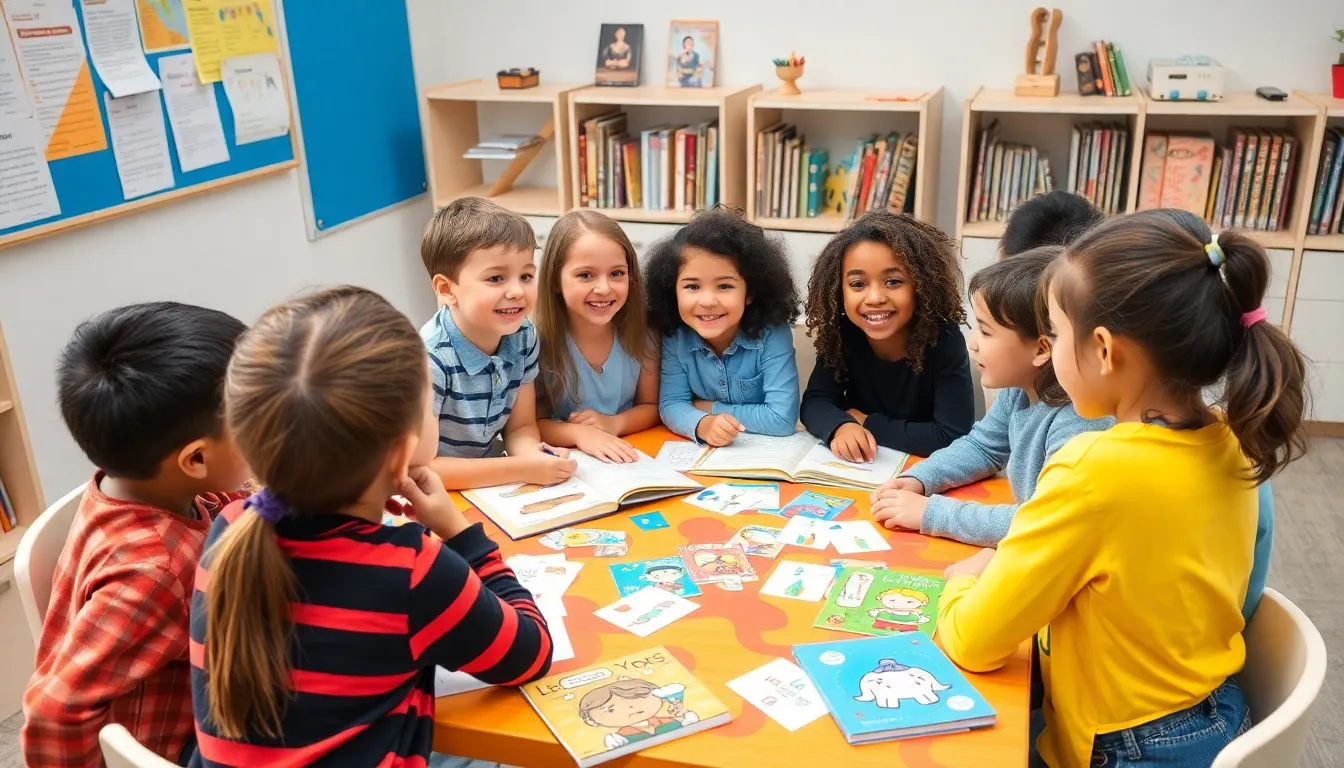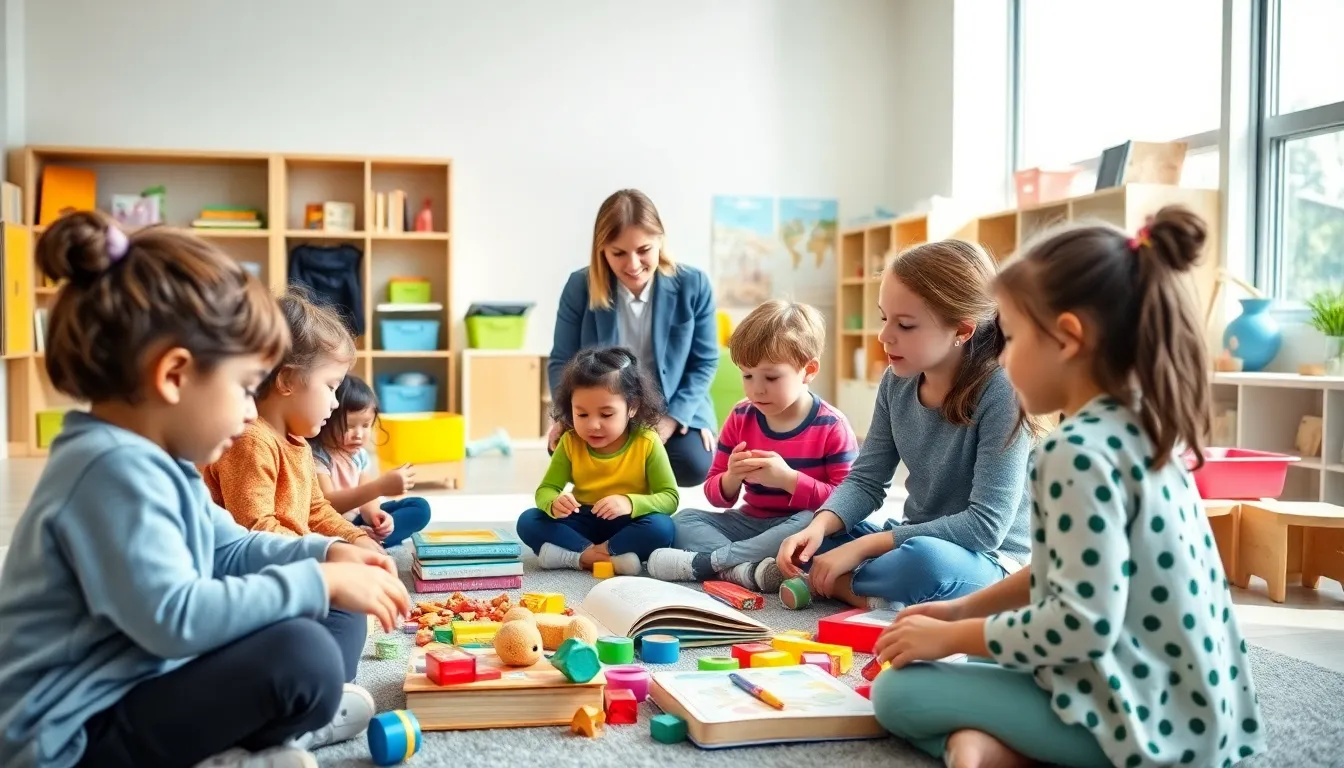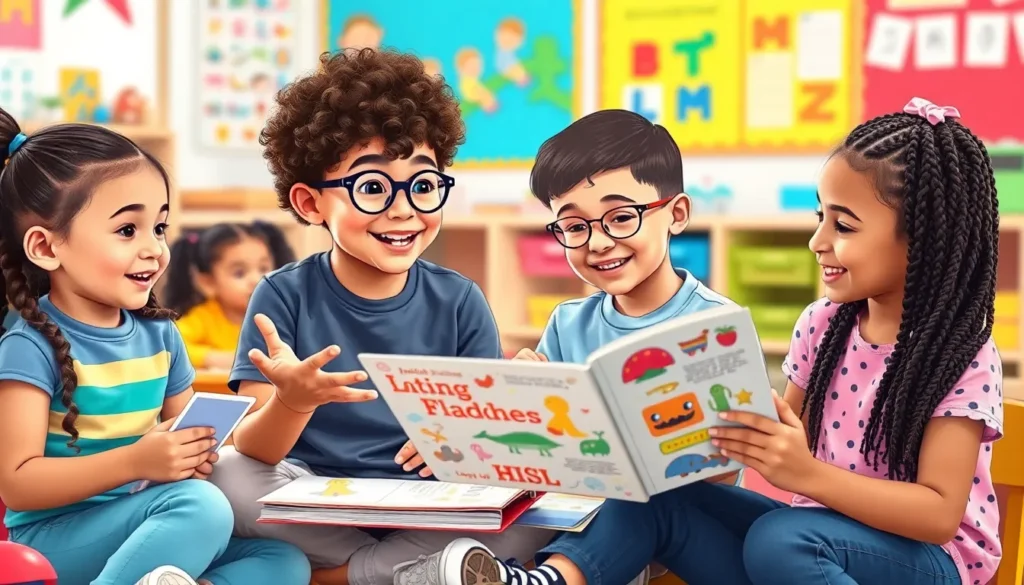Table of Contents
ToggleLanguage is like a garden; it needs nurturing to flourish. Whether you’re a budding linguist or just trying to brush up on your skills, the right tips can make all the difference. Imagine impressing friends with your newfound vocabulary, or effortlessly navigating conversations in another language. Sounds dreamy, right?
But let’s face it—language growth can feel like herding cats. With so many resources out there, where do you even start? Fear not! This article will sprinkle some humor and practical advice to help anyone grow their language skills faster than a toddler’s shoe size. Get ready to unlock the secrets of effective language learning and watch your confidence soar.
Understanding Language Growth
Language growth involves progressing through stages and recognizing its importance in communication and cognitive development. Developing language skills enriches social interactions and enhances personal expression.
The Importance of Language Development
Language development plays a critical role in building connections with others. It fosters effective communication, which is essential in both personal and professional relationships. Growing vocabulary stimulates cognitive skills. Engaging in conversations provides opportunities for language practice. Research indicates that a strong foundation in language correlates with academic success in later years. Establishing effective communication skills lays the groundwork for lifelong learning.
Stages of Language Growth
Language growth occurs in distinct stages, each marked by specific milestones. Infants start with cooing and babbling, gradually transitioning to single words. Toddlers begin to combine words into simple sentences by age two. Preschoolers expand vocabulary, moving towards more complex phrases. This age group becomes capable of basic storytelling and sharing ideas. By the time children reach school age, they typically gain proficiency in grammar and can engage in detailed conversations. Understanding these stages aids in recognizing typical language progress, providing guidance for supporting development.
Effective Language Growth Tips

Language growth requires consistent engagement and practical strategies. Below are effective tips to enhance language skills.
Encouraging Reading Habits
Reading regularly plays a vital role in vocabulary expansion and comprehension. Choosing age-appropriate books fosters interest and motivation. Incorporating a variety of genres exposes learners to diverse language styles. Setting aside daily reading time encourages routine. Discussing stories afterward enhances understanding and retention. Tracking progress through reading logs builds accountability and excitement.
Promoting Conversation Skills
Regular conversations help sharpen language abilities. Encouraging discussions on familiar topics makes it comfortable for learners. Asking open-ended questions invites deeper responses and critical thinking. Role-playing different scenarios enhances fluency in diverse contexts. Engaging in group conversations provides opportunities for peer learning and feedback. Celebrating small achievements boosts confidence in language use.
Utilizing Visual Aids
Visual aids greatly enhance understanding and retention of new vocabulary. Using flashcards, charts, and videos makes learning interactive and engaging. Associating words with corresponding images helps learners form connections. Incorporating games and apps also adds an element of fun. Displaying labels around the home reinforces language exposure in daily life. Regular viewing of educational content can stimulate interest and curiosity in language learning.
Activities for Enhancing Language Skills
Engaging in hands-on activities significantly boosts language skills. These approaches make learning enjoyable and effective.
Interactive Games
Interactive games abound, serving as excellent tools for language enhancement. Word puzzles, crosswords, and online quizzes promote vocabulary expansion. Incorporating language-based board games encourages conversations and strengthens comprehension. Multiplayer games facilitate teamwork and dialogue among players. Utilizing apps that focus on vocabulary and grammar creates a dynamic learning environment. Consistency in play reinforces mastery of language concepts. These games approach learning with enthusiasm, making users eager to improve.
Storytelling Techniques
Storytelling techniques engage learners’ creativity and enhance language capabilities. Oral storytelling fosters narrative skills while stimulating imagination. Encouraging children to recount experiences aids in fluency. Using visual prompts, such as pictures or storyboards, inspires detailed descriptions. Incorporating character development challenges learners to express emotions and motives. Group storytelling cultivates collaboration and peer learning. Sharing stories in various formats, including digital platforms, broadens reach and audience engagement. These methods ensure learners become confident communicators.
Common Challenges in Language Growth
Language development can face several challenges that may hinder progress. Identifying and addressing these issues leads to more effective learning strategies.
Identifying Delays
Recognizing delays in language growth requires careful observation of expressive and receptive skills. Children who struggle to use vocabulary or form sentences may need additional support. A speech-language pathologist can assess language abilities and provide necessary interventions. Notably, each child’s development varies; therefore, comparing a child’s skills to typical developmental milestones helps pinpoint issues early. Signs of concern include limited vocabulary or difficulty understanding instructions. Early identification plays a crucial role in establishing effective language support strategies.
Overcoming Obstacles
Overcoming obstacles in language growth often involves employing targeted strategies. Engaging activities promote consistent practice and familiarity with new concepts. Creating a language-rich environment enhances exposure to diverse vocabulary and sentence structures. Encouragement plays a vital role; praising efforts boosts motivation and reinforces learning. Integrating technology, such as language apps, can further augment traditional methods, offering interactive learning experiences. Collaborating with educators and therapists provides a well-rounded approach to address specific challenges. Lastly, patience and persistence lead to gradual improvement in language skills.
Embracing language growth is a journey filled with excitement and discovery. By implementing the tips and strategies outlined, learners can create a rich environment that nurtures their language skills. Engaging with diverse resources and activities not only enhances vocabulary but also builds confidence in communication.
Overcoming challenges is part of the process, and with patience and persistence, individuals can achieve remarkable progress. Whether through interactive games or storytelling, every effort contributes to a stronger foundation for lifelong learning. With the right support and encouragement, anyone can enjoy the rewards of effective language growth.







